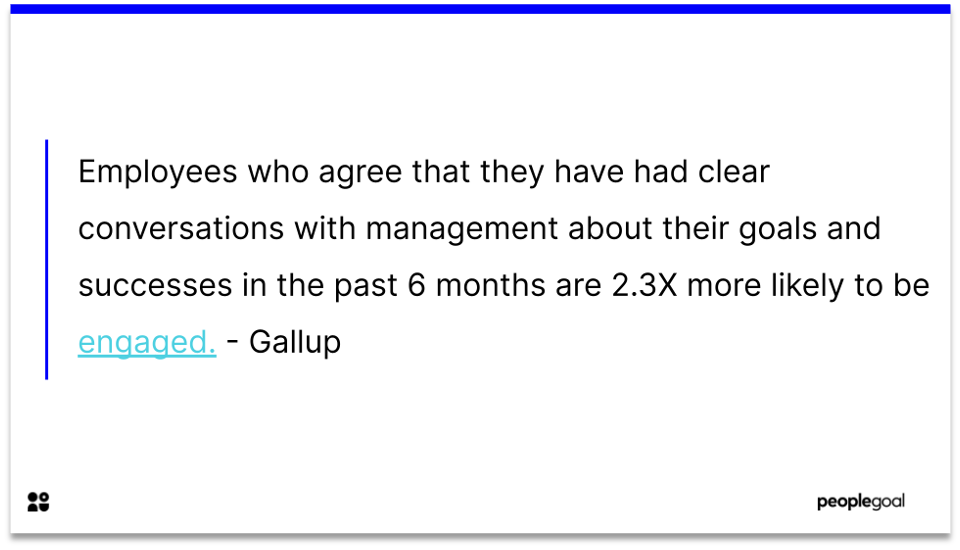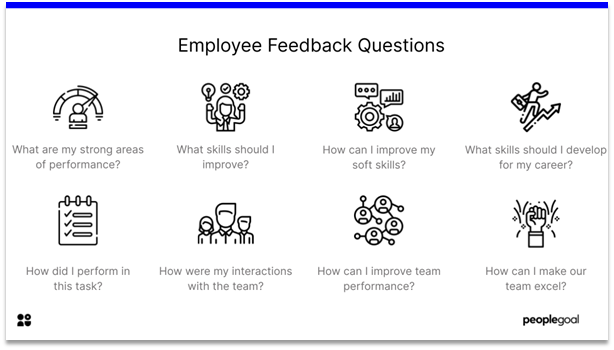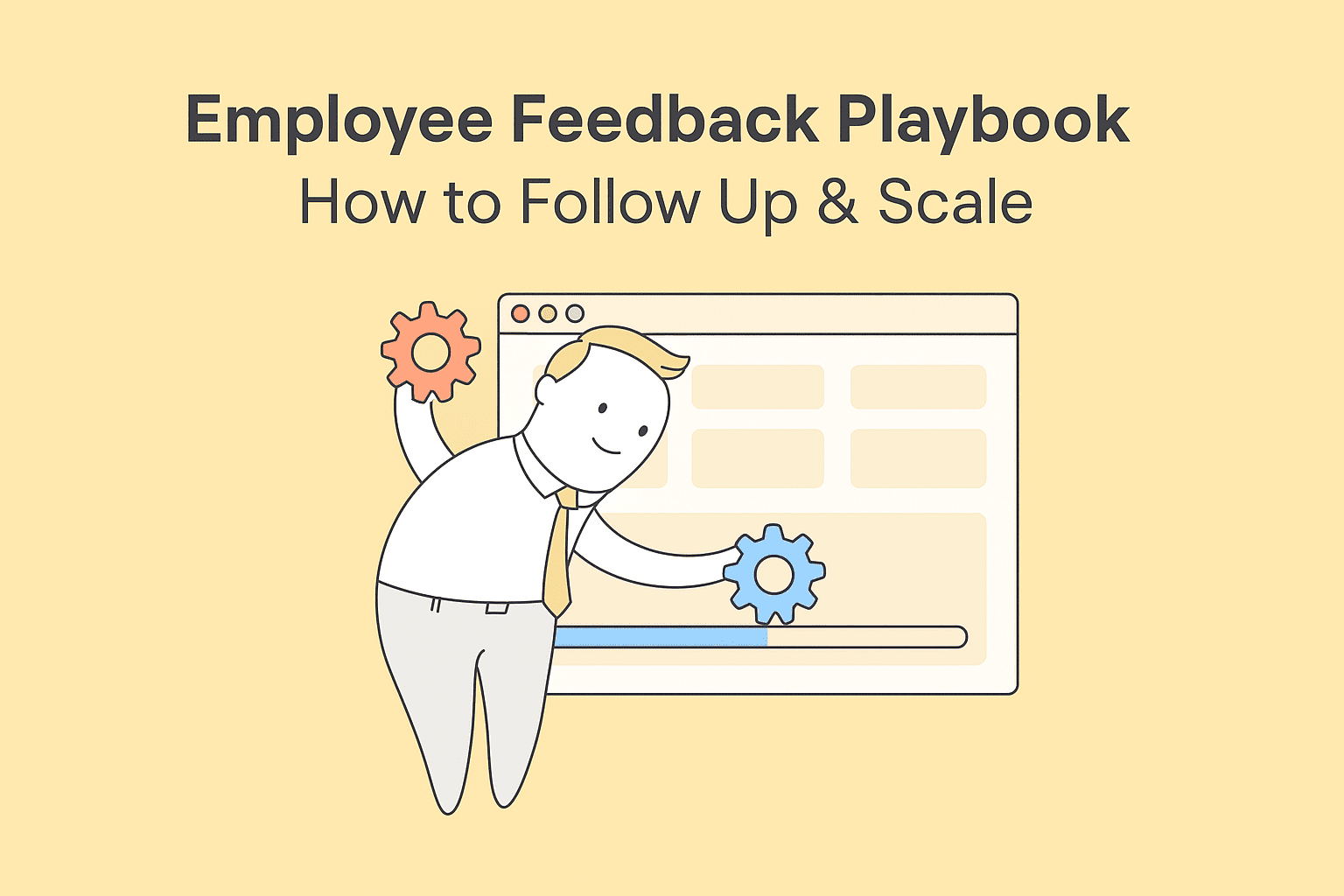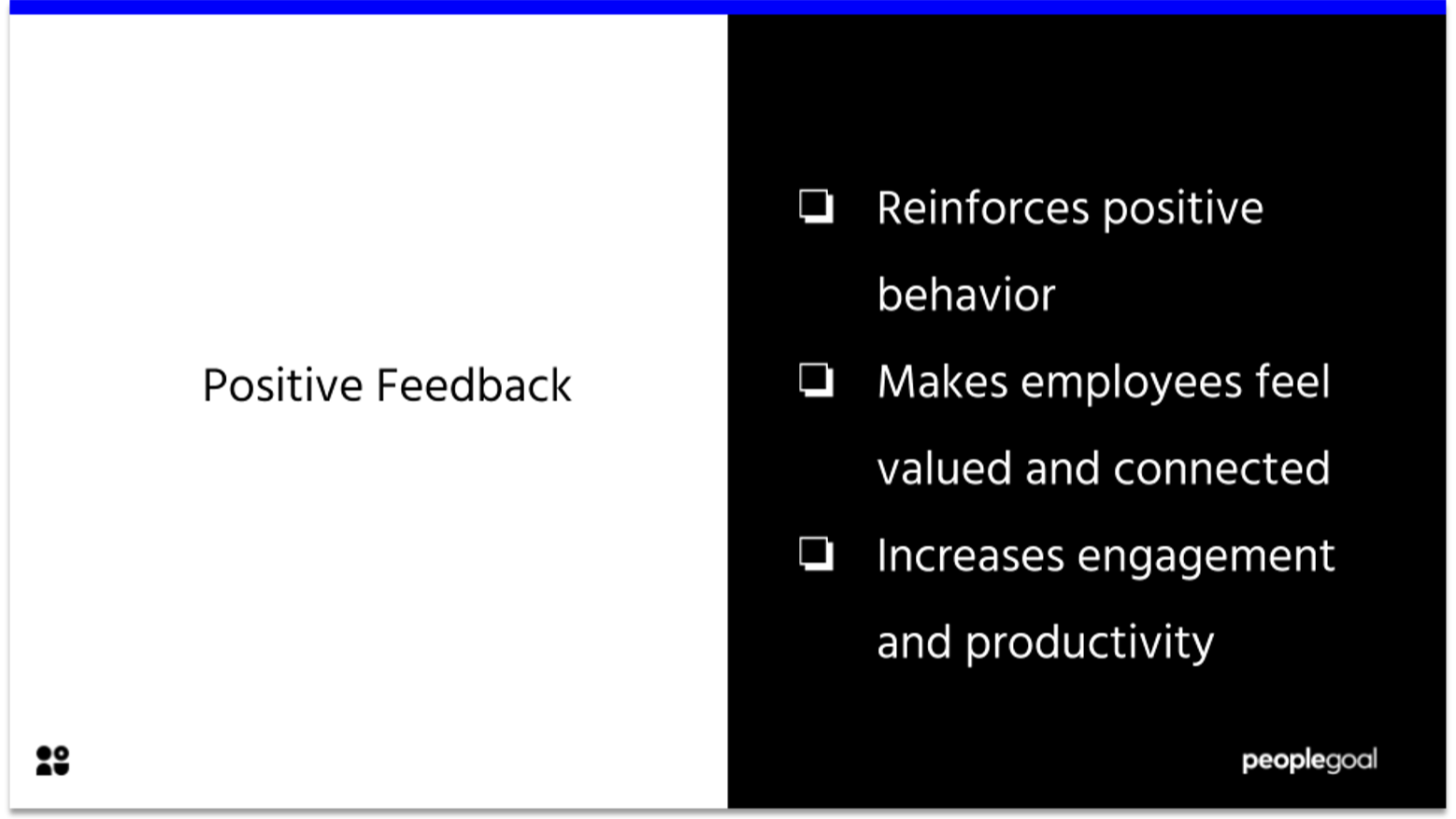You’ve spent long hours designing the perfect set of feedback questions. You’ve done your research, built the feedback form and launched the system, yet employee participation is still way down. What now? There are a couple of changes you can make to start encouraging feedback from employees.
Encouraging feedback from employees and building a feedback culture is a long journey, but the good news is that people want to participate! According to PwC, almost 60% of employees would like to get feedback at least every week. Often, the problem with encouraging employee participation lies in two key areas: communication and trust in the organization. Your first steps to tackle this are to assess the way you’re promoting the feedback loop and to address the reasons people are afraid to give feedback.
Using a 360 feedback software can make it easier to gather input from all directions—managers, peers, and direct reports—so the whole feedback process feels smoother and more effective.
Communicate your feedback culture
Market your feedback process
Sometimes the reason employees don’t give regular feedback is just because they don’t know that it’s there! Promote your feedback process in the same way you would any other internal initiative – be that an email campaign, a landing page on your internal site or a dedicated Slack channel. Include a covering sheet explaining how and where to give feedback, how often it should happen and what the structure is. Most importantly, explain why you are encouraging feedback and what the outcomes will be.
You can also include what the benefits of regular feedback are for employees, managers and leaders. Getting leadership support can be as simple as reminding them that 43% of highly engaged employees receive feedback at least once a week. And finally, build in regular reminders and prompts to keep feedback top of mind across the organization.
Give guidance and training
Giving feedback can be confusing when you’re not sure of the best way to structure it. Head this off by creating training packs to explain the principles of constructive feedback and to give guidance to both managers and employees on what’s expected from them. This is especially important if you’re going to be using ratings. Employees are more than just a number. What is that number used for? How is it combined with written feedback and what is the end outcome?
Employees will also need to understand not just how to give constructive feedback but even more importantly how to receive it. Starting an honest conversation between colleagues is difficult when actions are taken personally, so encourage everyone to assume a positive intent.
Take action
There’s no point in giving feedback if nothing is done about it. Show managers how best to take action – whether that’s with a structured one to one, a coaching session or a conflict resolution course. On the positive side, call out the great things employees are doing! Consider a recognition and rewards programme. A small public note to call out their achievements is hugely motivating and we’ve seen it encourage a feedback loop – for every recognition badge received by an employee they are likely to give out two of their own.
Build trust in the feedback process
Model the behaviour you want to see from the organization
Start with yourself and the leadership team. Seeing senior management buy in to the process automatically boosts the importance of feedback in everyone’s minds. Make sure leaders are giving feedback to their team, but more importantly make sure they are asking for feedback just as regularly. One of the most common objections to giving feedback is “there’s not enough time”. If your C-Suite has time to give feedback, there’s no excuse for others not to do the same.
Encourage peer to peer feedback
Feedback is not just a two-way system between managers and direct reports. Let employees know that they should be giving feedback to their peers, too. Feedback from colleagues you work with closely can often be even more valuable than feedback from a fairly busy, hands-off manager. You build out a 360-view of your strengths and weak spots, and you become more comfortable with the feedback process overall when you’re engaging with more than just the manager. You can look at 360 feedback examples to see how this type of feedback can be implemented effectively.
Address the discomfort
“Address the reason/s why people don’t naturally give feedback: complacency can be a problem, but the more probable reason is the uncomfortable stress reaction people often experience when both giving and receiving feedback.” – John Windust, Cognology.
Giving feedback can be stressful when the outcomes and intent are not made clear to the organization. Will we be punished for giving criticism? Will I be called out unfairly and who oversees that? Are feedback scores tied to compensation? Short answer – tell them! Explain exactly who has the final say, what the ratings really mean (if you’re using them) and what interventions you have in place to make this a fair and balanced system.
Reinforce confidentiality
Everyone is naturally afraid of being judged unfairly, but we can be just as nervous to give criticism when we’re not sure who’ll see it. Anonymous feedback can be a useful tool to work around this when you’re just getting started with feedback. Consider also a “hidden” feedback option where reports are sent to an employee’s manager rather than to the employee themselves. This is especially good in smaller teams where you can rely on the manager’s discretion to address points of improvement in an encouraging and anonymized way. Whichever route you decide on, your priority is to explain clearly who can see feedback, when they can see it and what will be done with it.
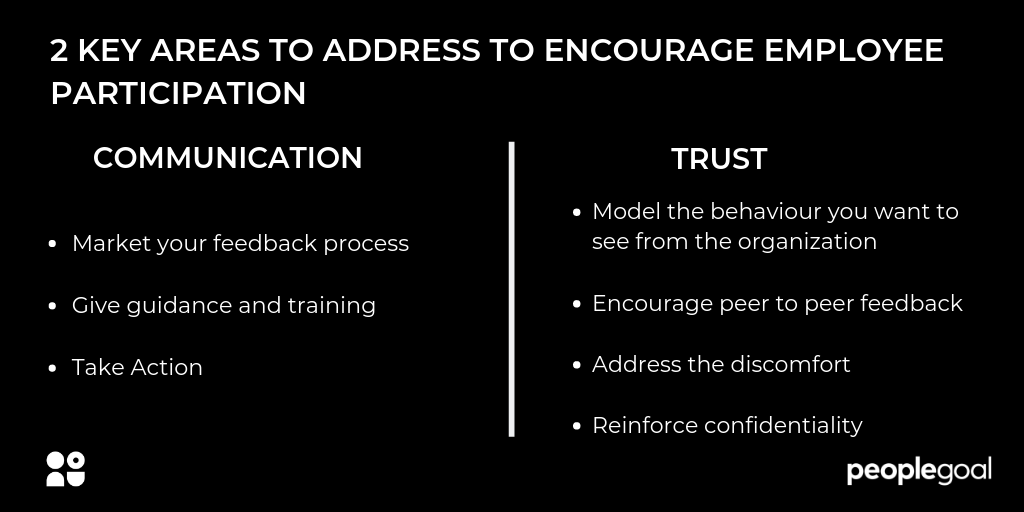
And after all of that, sometimes the issue with employee participation does come back to the way you’ve structured your feedback form. Take a step back and ask yourself a couple of troubleshooting questions.
Feedback questionnaire tips
Are the questions relevant?
Feedback needs to be specific to be effective. While the HR team might want to get feedback on every aspect of an employee’s role, it’s unlikely to make a difference to the employee’s performance or to their effect on the wider team. Tying feedback questions to company core values is an amazing way to align everyone’s performance in a unified direction, but remember to ask questions that indicate action they can take to model those core values.
Is the form too long?
If giving feedback is taking 30-45 minutes per employee there’s no way you’re going to encourage more participation. Strip your questionnaire right back. Remember that 360 feedback should be one part of the continuous performance process, not the whole thing.
One of the ways to address both of these issues is to consider a really simple, straightforward feedback structure called Start, Stop, Continue.
Start, Stop, Continue feedback
This short yet highly effective feedback method includes just three questions:
- What should I start doing?
- What should I stop doing?
- What should I continue doing?
Keeping feedback templates short and to-the point encourages all team members to give regular feedback. They know the feedback will be targeted and won’t take too much time to complete. The Start, Stop, Continue method also makes sure responses are actionable. See the difference between these two responses:
“Adam is sometimes pulled in many directions and gets distracted from the tasks he needs to complete.”
“Adam should start prioritizing his workload so that he can focus on the most important tasks first and not become derailed by small distractions.”
Start, Stop, Continue also encourages that “negative” feedback that people often shy away from giving. As in the example above, it gives you an easy way to frame your criticism within clear action steps that take the sting out of a negative comment.
Lastly, before implementing any of these changes you should benchmark your progress. Get a rough idea of what percentage of employees participate in the feedback process so that you know your baseline from which to improve. Then you can track which changes have the biggest effect on your organization and double down on those to get even better results.
Ready to 3x Your Teams' Performance?
Use the best performance management software to align goals, track progress, and boost employee engagement.



